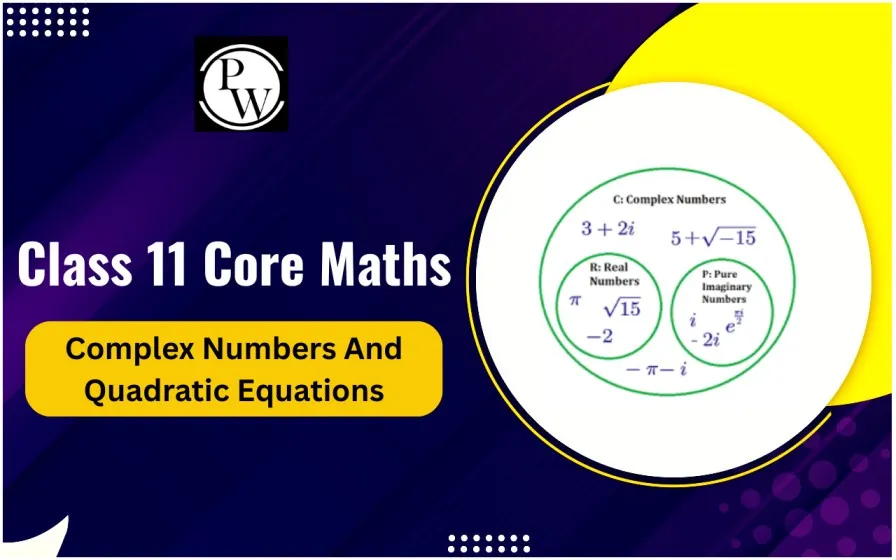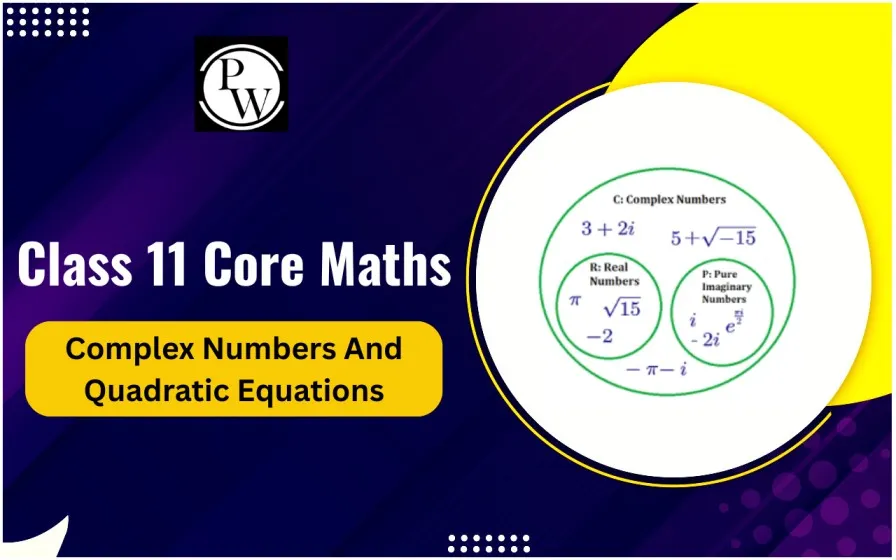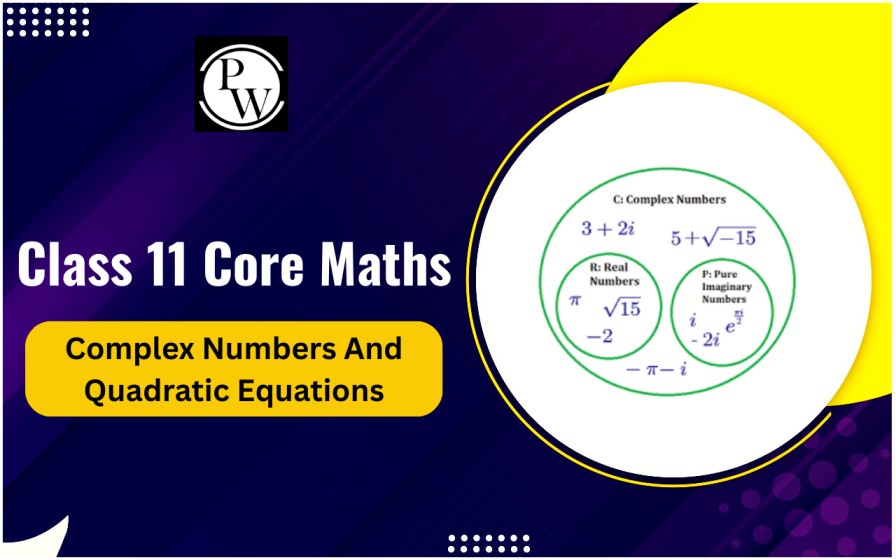

Complex Numbers: Mathematics is full of numbers and patterns. But sometimes, real numbers alone cannot solve certain problems. This is where Complex Numbers come in. They expand our number system and allow us to solve equations that otherwise have no solution. Along with this, quadratic equations also connect closely with complex numbers. In Class 11 Core Maths, learning these concepts builds a strong foundation for higher studies.
What are Complex Numbers?
A Complex Number is a number that has two parts: a real part and an imaginary part. It is written in the form a + ib, where:
- a is the real part.
- b is the imaginary part.
- I (also called iota) is the imaginary unit.
For example, 3 + 2i is a complex number. Here, 3 is the real part and 2i is the imaginary part.
Complex Numbers help us to solve equations like x² + 1 = 0. This equation has no solution in real numbers, but it has solutions in complex numbers.
Complex Numbers History
The concept of Complex Numbers started when mathematicians tried to solve equations with negative square roots. For example, the square root of -1 is not possible in real numbers. To deal with this, they created a new symbol i.
Famous mathematicians such as W.R. Hamilton worked to develop this system. Today, complex numbers are used in physics, engineering, and computer science.
Imaginary Unit ‘I’ and Its Powers
The letter i represents the square root of -1. By definition:
- i² = -1
- i³ = -i
- i⁴ = 1
After this, the powers repeat in a cycle. This pattern helps us simplify problems quickly. For example, i¹⁰ can be solved by dividing 10 by 4. The remainder is 2, so i¹⁰ = i² = -1.
What are Conjugate and Modules of Complex Numbers
Conjugate
The conjugate of a complex number changes the sign of the imaginary part. If z = a + ib, then its conjugate is a - ib.
Example: The conjugate of 4 + 3i is 4 - 3i.
Modulus
The modulus is the distance of the complex number from the origin in the number plane. It is written as |z|. The formula is:
|z| = √(a² + b²)
Example: If z = 3 + 4i, then |z| = √(3² + 4²) = √25 = 5.
Operations on Complex Numbers
We can add, subtract, multiply, and divide Complex Numbers like normal numbers, but we need to handle the imaginary part carefully.
Addition: Add real parts together and imaginary parts together. (2 + 3i) + (4 + 5i) = (2+4) + (3i+5i) = 6 + 8i.
Subtraction: Subtract real from real and imaginary with imaginary. (5 + 7i) - (2 + 3i) = (5-2) + (7i-3i) = 3 + 4i.
Multiplication: Multiply like normal algebra and replace i² with -1. (2 + i)(3 + 2i) = 6 + 4i + 3i + 2i² = 6 + 7i - 2 = 4 + 7i.
Division: Multiply the numerator and denominator by the conjugate of the denominator. Example: (3 + 2i)/(1 - i) × (1 + i)/(1 + i) = [(3+2i)(1+i)] / (1² - (-1)) = (3 + 3i + 2i + 2i²)/2 = (3 + 5i - 2)/2 = (1 + 5i)/2.
Complex Numbers Properties
The Complex Numbers have special properties that make them very useful. Below, we’ve mentioned the properties of Complex Numbers:
- Equality of Complex Numbers: Two complex numbers a + ib and c + id are equal if a = c and b = d.
- Conjugate Property: z × conjugate(z) = |z|².
- Addition Property: The sum of two complex numbers is another complex number.
- Multiplication Property: The product of two complex numbers is also a complex number.
- Modulus Property: |z| ≥ 0 for any complex number.
Role of the Quadratic Equation in Complex Numbers
Quadratic equations often lead to Complex Numbers as solutions. If the discriminant (b² - 4ac) of the quadratic equation is negative, then the roots are complex.
For example: x² + 4 = 0
Here, x² = -4. Taking the square root: x = ±2i.
Role of Quadratic Equations:
- Quadratic equations help us understand where complex numbers are needed.
- They show that real numbers are not enough to solve all equations.
- They create a bridge between algebra and complex number theory.
Exam Preparation Tips for Complex Numbers
Preparing for Complex Numbers in Class 11 exams requires both understanding and practice. Below, we’ve mentioned the preparation tips for complex numbers:
- Understand Basics First: Learn definitions of real part, imaginary part, modulus, and conjugate.
- Practice Powers of i: Remember the cycle of i and simplify large powers.
- Solve NCERT Questions: Practice all NCERT textbook exercises for a strong basis.
- Work on Identities: Apply (a+b)(a-b) = a² - b² in problems with conjugates.
- Practice Word Problems: Try questions where students can apply concepts in equations.
- Time Management: Solve problems step by step, but also learn shortcuts for exams.
- Revision: Revise properties and important formulas regularly.
Complex Numbers extend our number system beyond real numbers. They help solve problems that are impossible in real numbers alone. In Class 11 Core Maths, understanding this chapter is important as it connects to quadratic equations and other higher topics. With regular practice, clarity of concepts, and attention to properties, students can score well and also prepare for advanced mathematics.
Complex Numbers FAQs
What is a Complex Number in simple words?
Why do we need Complex Numbers?
What is the difference between the Conjugate and the Modulus of a Complex Number?
How are Complex Numbers used in Quadratic Equations?













